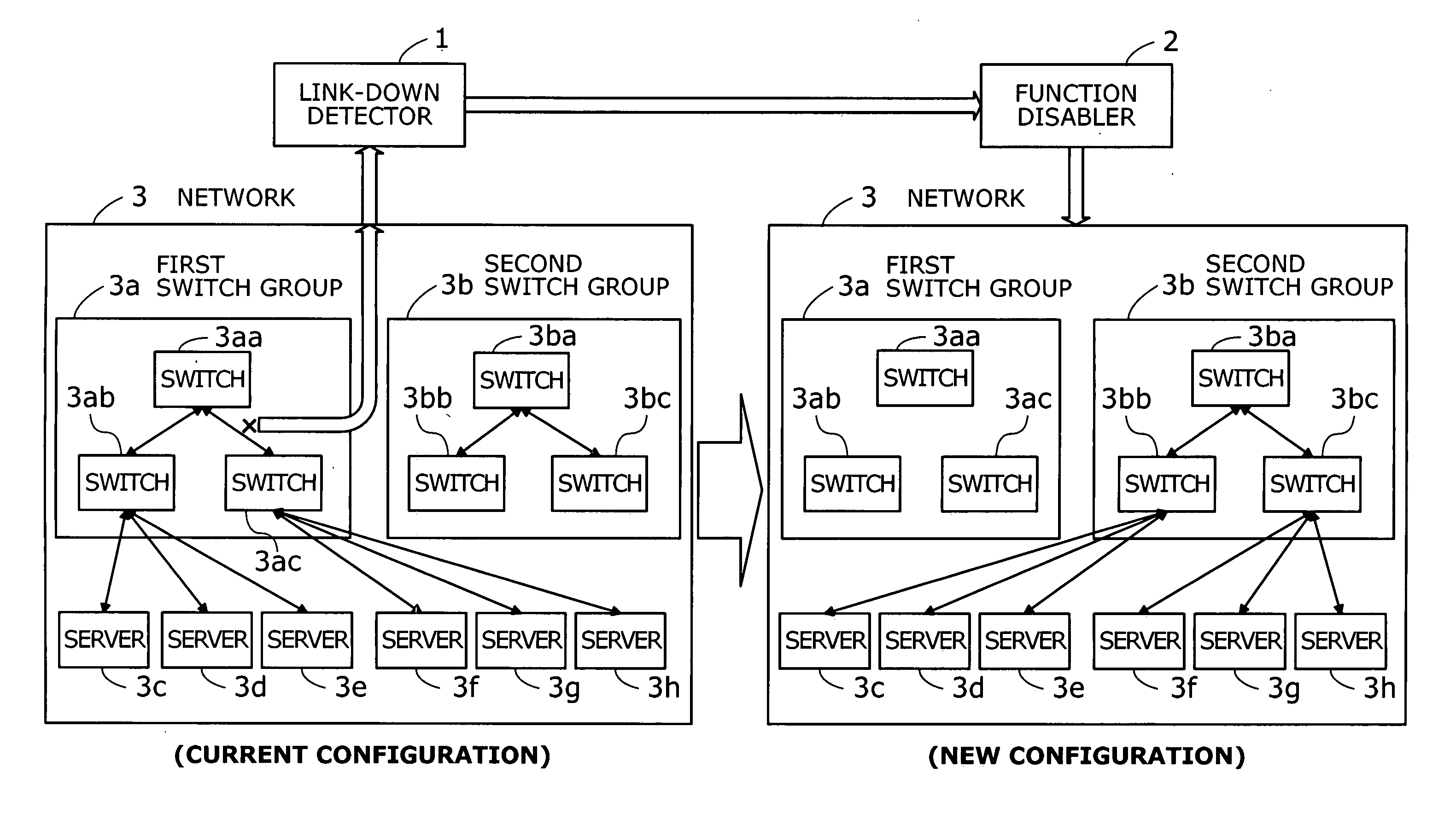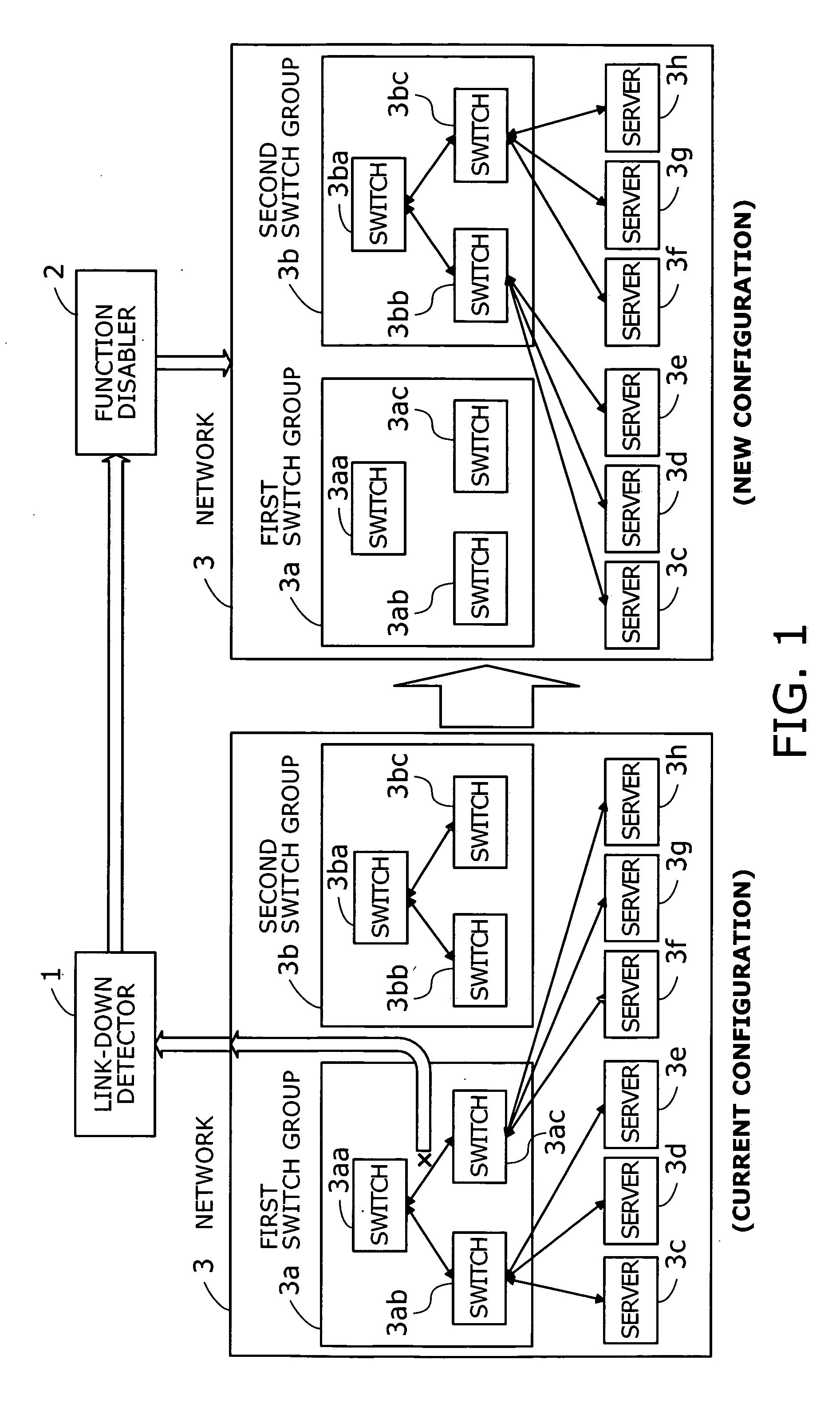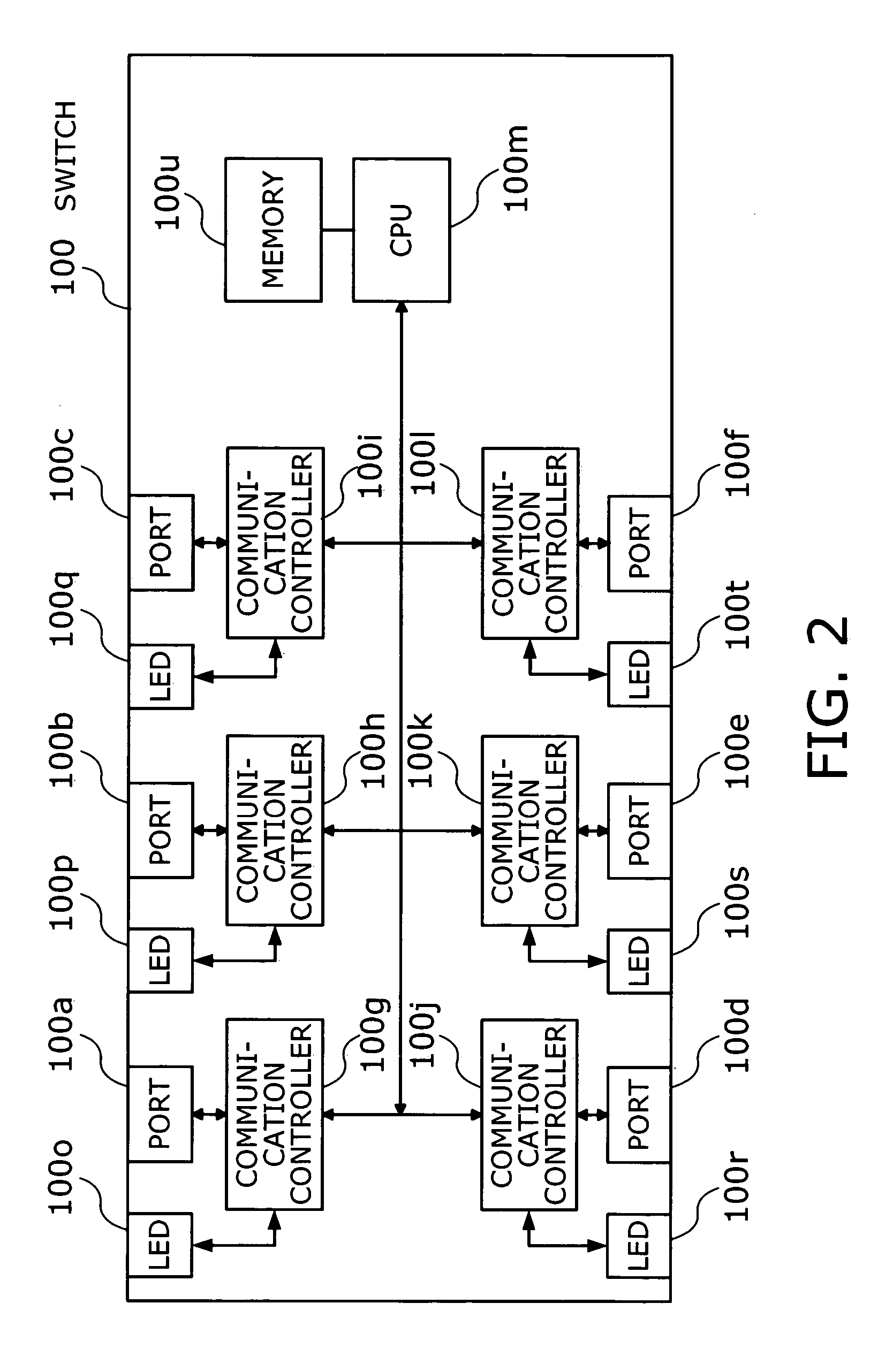Network system and supervisory server control method
- Summary
- Abstract
- Description
- Claims
- Application Information
AI Technical Summary
Benefits of technology
Problems solved by technology
Method used
Image
Examples
first embodiment
[0042] This section describes a first embodiment of the invention, in which a switch that has detected a link-down event in its own port forcibly disables other port links so as to propagate the link-down state to other switches belonging to the same switch group.
[0043]FIG. 2 is a conceptual view of a switch. This switch 100 has the following elements: ports 100a, 100b, 100c, 100d, 100e, and 100f; communication controllers 100g, 100h, 100i, 100j, 100k, and 1001; a central processing unit (CPU) 100m; light-emitting diode (LED) indicators 100o, 100p, 100q, 100r, 100s, and 100t; and a memory 100u.
[0044] The ports 100a to 100f are interface points where the switch 100 receives incoming electronic signals and transmit outgoing electronic signals under prescribed conditions. The communication controllers 100g to 100l control data flow inside the switch 100. Specifically, they inform the CPU 100m of a link-down event that has occurred at their corresponding ports in active use. They also...
second embodiment
[0068] This section describes a second embodiment of the present invention, in which switches 100 are configured to disable a limited number of ports, rather than all ports, when they detects a link-down event. Specifically, ports on each switch 100 is divided into a plurality of groups. When one port goes down, the link-down state propagates to other ports that belong to the same group as the failed port. The membership of each port group is defined previously in a port group management table on the memory 100u.
[0069]FIG. 8 shows an example of a port group management table. This port group management table 500 describes groups of ports on a switch 100, including state of each group. To serve as part of a network system, the switch 100 enables or disables port groups according to the table 500.
[0070] The illustrated port group management table 500 has the following data fields: “Group Number,”“Member Port Number,”“Group State,” and “Member Port State.” The group number field conta...
third embodiment
[0099] This section describes a third embodiment which employs a supervisory server. Switches 100 have the functions of notifying the supervisory server of a link-down event that they have detected. In response to the problem notification, the supervisory server commands the switches 100 to disable a predetermined set of ports.
[0100] The use of a separate supervisory server to control switch ports enables the port groups to be defined across a plurality of switches 100. The following example assumes three port groups defined across three switches 100 each having twelve ports.
[0101]FIG. 12 shows a system where a supervisory server is deployed to detect a problem in the network. Specifically, the system includes switches 401, 402, and 403, a supervisory LAN 404, a supervisory server 405, a monitor 406, a multiple switch port group database 700, and an intra-group position database 800. The switches 401 to 403 have basically the same hardware configuration as that described in FIG. 2...
PUM
 Login to View More
Login to View More Abstract
Description
Claims
Application Information
 Login to View More
Login to View More - R&D
- Intellectual Property
- Life Sciences
- Materials
- Tech Scout
- Unparalleled Data Quality
- Higher Quality Content
- 60% Fewer Hallucinations
Browse by: Latest US Patents, China's latest patents, Technical Efficacy Thesaurus, Application Domain, Technology Topic, Popular Technical Reports.
© 2025 PatSnap. All rights reserved.Legal|Privacy policy|Modern Slavery Act Transparency Statement|Sitemap|About US| Contact US: help@patsnap.com



